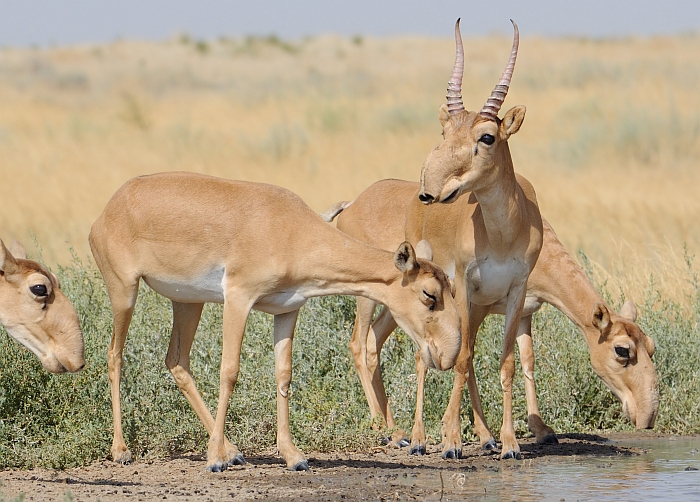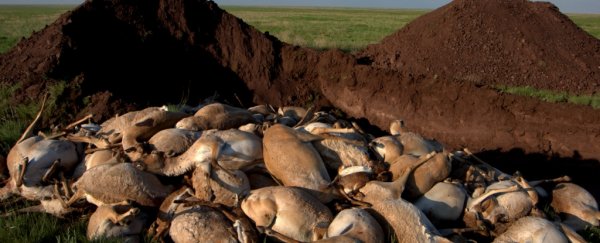When over 200,000 saiga antelopes dropped dead in Kazakhstan over the course of a few weeks in May 2015, scientists were baffled.
In just three weeks, over 60 percent of the global population of the critically endangered animals had been wiped out.
It's not the first time this has happened. In May 1998, 270,000 saiga antelopes, Saiga tatarica, died under similar circumstances; and in May 2010, 12,000 animals died from a 26,000-head herd.
In both cases, researchers couldn't reach the antelopes' remote and rugged habitat to find out why.
 (Victor Tyakht/Shutterstock)
(Victor Tyakht/Shutterstock)
At the time it was thought the culprit was a bacterial infection called pasteurellosis. An international team of researchers later confirmed that this was the cause of, at the very least, the 2015 incident.
The animals died of haemorrhagic septicaemia (blood poisoning), caused by the bacterium Pasteurella multocida type B. But until May 2015, those bacteria had been living inside the antelopes quite harmlessly.
Now, according to a new study by the same team, it has come to light that it was a co-occurrence of individually harmless circumstances that caused the mass deaths.
The researchers were able to trace the beginning of the event to an unusually warm, humid climate.
This, in turn, triggered an opportunistic invasion of the bloodstream by the bacteria, which until then had been quietly minding their own business.
May is the time of year that saiga antelopes calve, and they bear the largest young of any ungulate species, which means the mothers are already physiologically stressed - and all newborns are more vulnerable.
By looking at historical weather data, the researchers found the same pattern in two previous mass mortality events - the aforementioned 1988 event, and one in 1981 that saw 70,000 animals die.
Once widespread over the Eurasian steppe, the saiga antelope population has declined to just one location in Russia and three in Kazakhstan.
And these mass mortality events could keep happening, threatening the long-term survival of a species that has been on Earth since the late Pleistocene, nearly 100,000 years ago.
There are other factors that threaten the antelope, which has been listed as critically endangered since 2002.
"High levels of poaching since the 1990s have also been a major factor in depleting the species, while increasing levels of infrastructure development … threaten to fragment their habitat and interfere with their migrations," said researchers at the Royal Veterinary College in London.
"With all these threats, it is possible that another mass die-off from disease could reduce numbers to a level where recovery is no longer possible."
It's not entirely clear how exactly the increased temperature and humidity triggers the bacteria.
But it's definitely a cause for concern - especially since, as the paper notes, a climate change-induced increase in temperature is projected for the region over the short- to medium-term - and there's strong evidence for recent change.
However, even if we could predict when these weather events were going to occur, it would be impossible to prevent them, or administer penicillin to entire herds of antelope on the remote steppes of Kazakhstan.
"Understanding these mass mortality events, what triggers them and what can be done to combat them is extremely important to develop effective saiga conservation strategies," said Steffen Zuther of the Frankfurt Zoological Society/Association for the Conservation of Biodiversity of Kazakhstan.
"The triggering of such mass mortality events in saiga through weather conditions shows that not much can be done to prevent them occurring, and therefore how important it is to maintain saiga populations of sufficient size for the species to survive such catastrophes."
The research has been published in the journal Science Advances.
